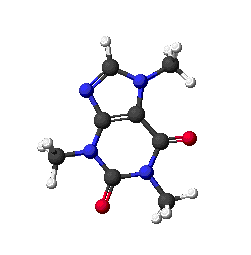
Chemistry
Chemistry 15: 5-6

WebLecture
Disturbing Chemical Equilibrium
Chapter 15: 5-6 Homework
- Reading Preparation
- WebLecture
- Study Activity
- Preparation work for chat
- Online Quiz
- Lab Instructions
Reading Preparation
Textbook assignment: Read Kotz and Triechel, Chemistry and Chemical Reactivity Chapter 15: Sections 5 and 6.
Kotz and Triechel, Chemistry and Chemical Reactivity Chapter 15: Sections 5-6.
Study Notes
- 15.5 In many analyses, we recognize that an overall reaction is a sequence of steps. We may need to multiply a reaction's coefficients or reverse it to achieve the net desired overall reaction. These manipulations affect the equilibrium constant of the reaction step.
- Changing the stoichiometric coefficients by multiplying through a reaction equation will change the equilibrium constant by an exponential factor. For example, if we double the reaction coefficients, the equilibrium constant will be squared.
- If we reverse a chemical reaction, the products and reactants switch places in the ratio for the equilibrium constant. The equilibrium constant for a reverse reaction is the inverse of the forward reaction equilibrium constant: Kreverse = 1 / Kforward.
- 15.6 If a system at equilibrium is disturbed, it will try to establish a new equilibrium by mitigating the effect of the disturbance as much as possible. A disturbance could include changes in temperature, the addition of a reactant or product, or in gases, changes in volume.
Key Formula
| Doubling a reaction | |
| Reversing a Reaction | |
| Adding Two Reactions |
Web Lecture
Read the following weblecture before chat: Disturbing an Equilibrium State
Study Activity
Videos for Chapter 15: Principles of Chemical Reactivity: Equilibria
Review the Videos at Thinkwell Video Lessons.
- Under "Chemical Equilibrium"
- Shifting Chemical Equilibrium
- Le Chatelier's Principle
- The Effect of Changing Amounts on Equilibrium
- The Effect of Pressure and Volume on Equilibrium
- The Effect of Temperature and Catalysts on Equilibrium
- Shifting Chemical Equilibrium
Follow the instructions at ChemReaX Virtual Lab: Le Chatelier's Principle for the hydrogen iodide synthesis reaction.
- Set up the reaction on the General Reactions page by selecting the reaction from the General Reactions list; this should set the initial composition to the right bar values. Note the default pressure factor at 1.0.
- Run the reaction and record the composition of the simulated final state.
- Change the pressure factor to 0.5 and rerun the reaction. What happens to the values in the final state?
- Change the pressure factor to 2.5 and rerun the reaction. What happens to the values in the final state?
- Change the pressure factor to 5.0 and rerun the reaction. What happens to the values in the final state?
Chat Preparation Activities
- Essay question: The Moodle forum for the session will assign a specific study question for you to prepare for chat. You need to read this question and post your answer before chat starts for this session.
- Mastery Exercise: The Moodle Mastery exercise for the chapter will contain sections related to our chat topic. Try to complete these before the chat starts, so that you can ask questions.
Chapter Quiz
- Required: Complete the Mastery exercise with a passing score of 85% or better.
- Go to the Moodle and take the quiz for this chapter.
(Aligns to) AP #12 GUIDED INQUIRY — Determining the rate law — Phase II
Run the experiment you designed in Phase I at least twice at different temperatures, and at least twice at different concentrations. Analyze your data, and predict what will happen if you increase or decrease temperature, and increase or decrease one of the reactants. Test your predictions by doing a third run for each change.
Resources:
- IGHCE Lab 12.3 Determination of the effect of Concentration on Reaction Rate
- HSCKM VI-3 Determining a Reaction Order
- APGIE Investigation 11: What Is the Rate Law of the Fading of Crystal Violet Using Beer’s Law
- There is no alternative form of this lab.
© 2005 - 2025 This course is offered through Scholars Online, a non-profit organization supporting classical Christian education through online courses. Permission to copy course content (lessons and labs) for personal study is granted to students currently or formerly enrolled in the course through Scholars Online. Reproduction for any other purpose, without the express written consent of the author, is prohibited.